81 start with W start with W
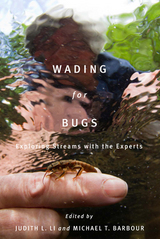
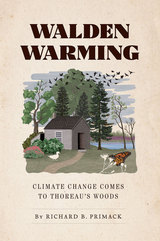
In Walden Warming, Richard B. Primack uses Thoreau and Walden, icons of the conservation movement, to track the effects of a warming climate on Concord’s plants and animals. Under the attentive eyes of Primack, the notes that Thoreau made years ago are transformed from charming observations into scientific data sets. Primack finds that many wildflower species that Thoreau observed—including familiar groups such as irises, asters, and lilies—have declined in abundance or have disappeared from Concord. Primack also describes how warming temperatures have altered other aspects of Thoreau’s Concord, from the dates when ice departs from Walden Pond in late winter, to the arrival of birds in the spring, to the populations of fish, salamanders, and butterflies that live in the woodlands, river meadows, and ponds.
Primack demonstrates that climate change is already here, and it is affecting not just Walden Pond but many other places in Concord and the surrounding region. Although we need to continue pressuring our political leaders to take action, Primack urges us each to heed the advice Thoreau offers in Walden: to “live simply and wisely.” In the process, we can each minimize our own contributions to our warming climate.
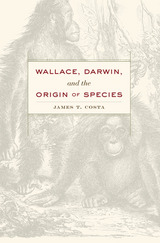
Charles Darwin is often credited with discovering evolution through natural selection, but the idea was not his alone. The naturalist Alfred Russel Wallace, working independently, saw the same process at work in the natural world and elaborated much the same theory. Their important scientific contributions made both men famous in their lifetimes, but Wallace slipped into obscurity after his death, while Darwin’s renown grew. Dispelling the misperceptions that continue to paint Wallace as a secondary figure, James Costa reveals the two naturalists as true equals in advancing one of the greatest scientific discoveries of all time.
Analyzing Wallace’s “Species Notebook,” Costa shows how Wallace’s methods and thought processes paralleled Darwin’s, yet inspired insights uniquely his own. Kept during his Southeast Asian expeditions of the 1850s, the notebook is a window into Wallace’s early evolutionary ideas. It records his evidence-gathering, critiques of anti-evolutionary arguments, and plans for a book on “transmutation.” Most important, it demonstrates conclusively that natural selection was not some idea Wallace stumbled upon, as is sometimes assumed, but was the culmination of a decade-long quest to solve the mystery of the origin of species.
Wallace, Darwin, and the Origin of Species also reexamines the pivotal episode in 1858 when Wallace sent Darwin a manuscript announcing his discovery of natural selection, prompting a joint public reading of the two men’s papers on the subject. Costa’s analysis of the “Species Notebook” shines a new light on these readings, further illuminating the independent nature of Wallace’s discoveries.

That may be bad news for me, but is it bad news for people in general? Does the fact that as much as fifty percent of our waking hours find us failing to focus on the task at hand represent a problem? Michael Corballis doesn’t think so, and with The Wandering Mind, he shows us why, rehabilitating woolgathering and revealing its incredibly useful effects. Drawing on the latest research from cognitive science and evolutionary biology, Corballis shows us how mind-wandering not only frees us from moment-to-moment drudgery, but also from the limitations of our immediate selves. Mind-wandering strengthens our imagination, fueling the flights of invention, storytelling, and empathy that underlie our shared humanity; furthermore, he explains, our tendency to wander back and forth through the timeline of our lives is fundamental to our very sense of ourselves as coherent, continuing personalities.
Full of unusual examples and surprising discoveries, The Wandering Mind mounts a vigorous defense of inattention—even as it never fails to hold the reader’s.
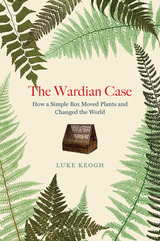
Roses, jasmine, fuchsia, chrysanthemums, and rhododendrons bloom in gardens across the world, and yet many of the most common varieties have roots in Asia. How is this global flowering possible? In 1829, surgeon and amateur naturalist Nathaniel Bagshaw Ward placed soil, dried leaves, and the pupa of a sphinx moth into a sealed glass bottle, intending to observe the moth hatch. But when a fern and meadow grass sprouted from the soil, he accidentally discovered that plants enclosed in glass containers could survive for long periods without watering. After four years of experimentation in his London home, Ward created traveling glazed cases that would be able to transport plants around the world. Following a test run from London to Sydney, Ward was proven correct: the Wardian case was born, and the botanical makeup of the world’s flora was forever changed.
In our technologically advanced and globalized contemporary world, it is easy to forget that not long ago it was extremely difficult to transfer plants from place to place, as they often died from mishandling, cold weather, and ocean salt spray. In this first book on the Wardian case, Luke Keogh leads us across centuries and seas to show that Ward’s invention spurred a revolution in the movement of plants—and that many of the repercussions of that revolution are still with us, from new industries to invasive plant species. From the early days of rubber, banana, tea, and cinchona cultivation—the last used in the production of the malaria drug quinine—to the collecting of beautiful and exotic flora like orchids in the first great greenhouses of the United States Botanic Garden in Washington, DC, and England’s Royal Botanic Gardens, Kew, the Wardian case transformed the world’s plant communities, fueled the commercial nursery trade and late nineteenth-century imperialism, and forever altered the global environment.


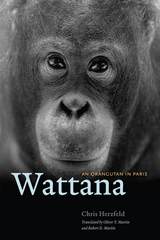
Offering a uniquely intimate look at the daily lives of captive great apes, Herzfeld uses Wattana’s life to trace the history of orangutans from their first arrival in Europe in 1776 to the inhabitants of the Zoo of Paris and other zoos today. She provides a close look at the habits, technical know-how, and skills of Wattana, who, remarkably, uses strings, paper rolls, rope, and even pieces of wood to make things. And she thoughtfully explores how apes individually—and often with ingenuity—come to terms with and adapt to their captive environments and caretakers. Through these stories, Wattana sympathetically reveals the extraordinary psychology and distinctive personalities of great apes as well as the interconnections between animal and human lives, especially in zoos.
Scientists predict that orangutans will disappear from the wild by 2030, and captive animals like Wattana may, as a result, provide our best chance to understand and appreciate their astonishing intelligence and abilities. Wattana, the accomplished maker of knots, is the hero of this poignant book, which will enthrall anyone curious about the lives of our primate cousins.
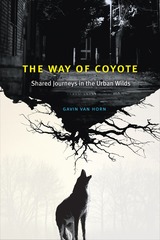
With The Way of Coyote, Gavin Van Horn reveals the stupendous diversity of species that can flourish in urban landscapes like Chicago. That isn’t to say city living is without its challenges. Chicago has been altered dramatically over a relatively short timespan—its soils covered by concrete, its wetlands drained and refilled, its river diverted and made to flow in the opposite direction. The stories in The Way of Coyote occasionally lament lost abundance, but they also point toward incredible adaptability and resilience, such as that displayed by beavers plying the waters of human-constructed canals or peregrine falcons raising their young atop towering skyscrapers. Van Horn populates his stories with a remarkable range of urban wildlife and probes the philosophical and religious dimensions of what it means to coexist, drawing frequently from the wisdom of three unconventional guides—wildlife ecologist Aldo Leopold, Taoist philosopher Lao Tzu, and the North American trickster figure Coyote. Ultimately, Van Horn sees vast potential for a more vibrant collective of ecological citizens as we take our cues from landscapes past and present.
Part urban nature travelogue, part philosophical reflection on the role wildlife can play in waking us to a shared sense of place and fate, The Way of Coyote is a deeply personal journey that questions how we might best reconcile our own needs with the needs of other creatures in our shared urban habitats.

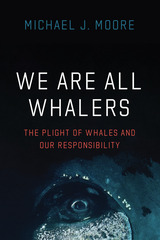
Relating his experiences caring for endangered whales, a veterinarian and marine scientist shows we can all share in the salvation of these imperiled animals.
The image most of us have of whalers includes harpoons and intentional trauma. Yet eating commercially caught seafood leads to whales’ entanglement and slow death in rope and nets, and the global shipping routes that bring us readily available goods often lead to death by collision. We—all of us—are whalers, marine scientist and veterinarian Michael J. Moore contends. But we do not have to be.
Drawing on over forty years of fieldwork with humpback, pilot, fin, and, in particular, North Atlantic right whales—a species whose population has declined more than 20 percent since 2017—Moore takes us with him as he performs whale necropsies on animals stranded on beaches, in his independent research alongside whalers using explosive harpoons, and as he tracks injured whales to deliver sedatives. The whales’ plight is a complex, confounding, and disturbing one. We learn of existing but poorly enforced conservation laws and of perennial (and often failed) efforts to balance the push for fisheries profit versus the protection of endangered species caught by accident.
But despite these challenges, Moore’s tale is an optimistic one. He shows us how technologies for ropeless fishing and the acoustic tracking of whale migrations make a dramatic difference. And he looks ahead with hope as our growing understanding of these extraordinary creatures fuels an ever-stronger drive for change.
For more information on Moore’s book and research, please visit his webpage at the Woods Hole Oceanographic Institution.
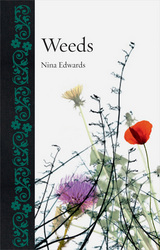
We spray them, pluck them, and bury them under mulch; and we curse their resilience when they spring back into place. To most of us, weeds are a nuisance, not worth the dirt they are growing in. But the fact is weeds are a plant just like any other, and it is only we who designate them as a weed or not, as a plant we will dote over or one we will tear out of the earth with abandon. And as Nina Edwards shows in this history, that designation is constantly changing. Balancing popular history with botanical science, she tells the story of the lowly, but proud, weed.
As Edwards shows, the idea of the weed is a slippery one, constantly changing under different needs, fashions, and contexts. In a tightly controlled field of corn, a scarlet poppy is a bright red intruder, but in other parts of the world it is an important cultural symbol, a potent and lucrative pharmaceutical source, or simply a beautiful, lakeside ornament. What we consider a pest—Aristolochia Rotunda, or “fat hen”—was, in Neolithic times, a staple crop, its seeds an important source of nutrition. Sprinkled with personal anecdotes and loads of useful information, Weeds sketches history after history of the fashions and attitudes that have shaped our gardens, showing us that it is just as important what we keep out of them as what we put in, and that just because we despise one species does not mean that there haven’t been others whose very lives have depended on it.
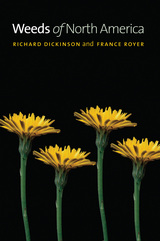
Encyclopedic in scope, the book is the first to cover North American weeds at every stage of growth. The book is organized by plant family, and more than five hundred species are featured. Each receives a two-page spread with images and text identification keys. Species are arranged within family alphabetically by scientific name, and entries include vital information on seed viability and germination requirements.
Whether you believe, like Donald Culross Peattie, that “a weed is a plant out of place,” or align with Elizabeth Wheeler Wilcox’s “weeds are but unloved flowers,” Dickinson and Royer provide much-needed background on these intrusive organisms. In the battle with weeds, knowledge truly is power. Weeds of North America is the perfect tool for gardeners, as well as anyone working in the business of weed ecology and control.
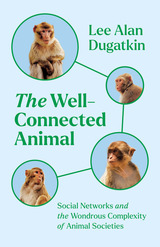
It’s all about who you know. Whether vampire bats sharing blood meals for survival, field crickets remembering champion fighters, macaque monkeys forming grooming pacts after a deadly hurricane, or great tit birds learning the best way to steal milk—it pays to be well connected.
In this tour of the animal kingdom, evolutionary biologist Lee Alan Dugatkin reveals a new field of study, uncovering social networks that existed long before the dawn of human social media. He accessibly describes the latest findings from animal behavior, evolution, computer science, psychology, anthropology, genetics, and neurobiology, and incorporates interviews and insights from researchers he finds swimming with manta rays, avoiding pigeon poop, and stopping monkeys from stealing iPads. With Dugatkin as our guide, we investigate social networks in giraffes, elephants, kangaroos, Tasmanian devils, whales, bats, and more. From animal networks in Australia and Asia to Africa, Europe, and the Americas, The Well-Connected Animal is an eye-opening exposé of wild friends, enemies, and everything in between.
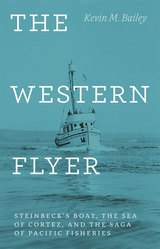
In this book, Kevin M. Bailey resurrects this forgotten witness to the changing tides of Pacific fisheries. He draws on the Steinbeck archives, interviews with family members of crew, and more than three decades of working in Pacific Northwest fisheries to trace the depletion of marine life through the voyages of a single ship. After Steinbeck and his friend Ed Ricketts—a pioneer in the study of the West Coast’s diverse sea life and the inspiration behind “Doc” in Cannery Row—chartered the boat for their now-famous 1940 expedition, the Western Flyer returned to its life as a sardine seiner in California. But when the sardine fishery in Monterey collapsed, the boat moved on: fishing for Pacific ocean perch off Washington, king crab in the Bering Sea off Alaska, and finally wild Pacific salmon—all industries that would also face collapse.
As the Western Flyer herself faces an uncertain future—a businessman has bought her, intending to bring the boat to Salinas, California, and turn it into a restaurant feature just blocks from Steinbeck’s grave—debates about the status of the California sardine, and of West Coast fisheries generally, have resurfaced. A compelling and timely tale of a boat and the people it carried, of fisheries exploited, and of fortunes won and lost, The Western Flyer is environmental history at its best: a journey through time and across the sea, charting the ebb and flow of the cobalt waters of the Pacific coast.
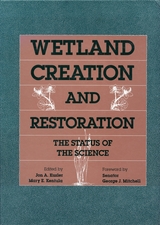
With more than thirty papers from leading scientists and technicians, Wetland Creation and Restoration draws upon important new information and provides the first major national assessment by region of the capacity to implement a goal of no-net-loss of wetlands. It is a one-of-a-kind compendium of hands-on information about methods of creating, restoring, and enhancing wetlands.
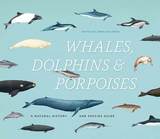
Opening with an accessible rundown of cetacean biology—including the most recent science on feeding, mating, and communication—Whales, Dolphins, and Porpoises then presents species-specific natural history on a range of topics, from anatomy and diet to distribution and conservation status. Each entry also includes original drawings of the species and its key identifiers, such as fin shape and color, tooth shape, and characteristic markings as they would appear both above and below water—a feature unique to this book.
Figures of myth and—as the debate over hunting rages on—figures of conflict since long before the days of Moby-Dick, whales, dolphins, and porpoises are also ecologically important and, in many cases, threatened. Written for general enthusiasts, emergent cetacean fans, and biologists alike, this stunning, urgently needed book will serve as the definitive guide for years to come.
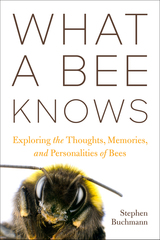
Although their brains are incredibly small—just one million neurons compared to humans’ 100 billion—bees have remarkable abilities to navigate, learn, communicate, and remember. In What a Bee Knows, entomologist Stephen Buchmann explores a bee’s way of seeing the world and introduces the scientists who make the journey possible. We travel into the field and to the laboratories of noted bee biologists who have spent their careers digging into the questions most of us never thought to ask (for example: Do bees dream? And if so, why?). With each discovery, Buchmann’s insatiable curiosity and sense of wonder is infectious.
What a Bee Knows will challenge your idea of a bee’s place in the world—and perhaps our own. This lively journey into a bee’s mind reminds us that the world is more complex than our senses can tell us.
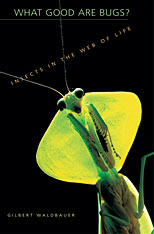
We shriek about them, slap and spray them, and generally think of insects (when we think of them at all) as pests. Yet, if all insects, or even a critical few, were to disappear--if there were none to pollinate plants, serve as food for other animals, dispose of dead organisms, and perform other ecologically essential tasks--virtually all the ecosystems on earth, the webs of life, would unravel. This book, the first to catalogue ecologically important insects by their roles, gives us an enlightening look at how insects work in ecosystems--what they do, how they live, and how they make life as we know it possible.
In What Good Are Bugs? Gilbert Waldbauer combines anecdotes from entomological history with insights into the intimate workings of the natural world, describing the intriguing and sometimes amazing behavior of these tiny creatures. He weaves a colorful, richly textured picture of beneficial insect life on earth, from ants sowing their "hanging gardens" on Amazonian shrubs and trees to the sacred scarab of ancient Egypt burying balls of cattle dung full of undigested seeds, from the cactus-eating caterpillar (aptly called Cactoblastis) controlling the spread of the prickly pear to the prodigious honey bee and the "sanitary officers of the field"--the fly maggots, ants, beetles, and caterpillars that help decompose and recycle dung, carrion, and dead plants. As entertaining as it is informative, this charmingly illustrated volume captures the full sweep of insects' integral place in the web of life.
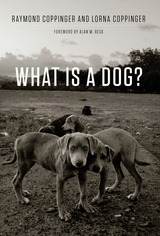
Exploring the natural history of these animals, the Coppingers explain how the village dogs of Vietnam, India, Africa, and Mexico are strikingly similar. These feral dogs, argue the Coppingers, are in fact the truly archetypal dogs, nearly uniform in size and shape and incredibly self-sufficient. Drawing on nearly five decades of research, they show how dogs actually domesticated themselves in order to become such efficient scavengers of human refuse. The Coppingers also examine the behavioral characteristics that enable dogs to live successfully and to reproduce, unconstrained by humans, in environments that we ordinarily do not think of as dog friendly.
Providing a fascinating exploration of what it actually means—genetically and behaviorally—to be a dog, What Is a Dog? will undoubtedly change the way any beagle or bulldog owner will reflect on their four-legged friend.
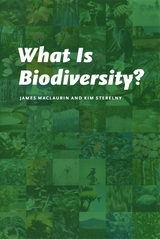
Here, Maclaurin and Sterelny explore not only the origins of the concept of biodiversity, but also how that concept has been shaped by ecology and more recently by conservation biology. They explain the different types of biodiversity important in evolutionary theory, developmental biology, ecology, morphology and taxonomy and conclude that biological heritage is rich in not just one biodiversity but many. Maclaurin and Sterelny also explore the case for the conservation of these biodiversities using option value theory, a tool borrowed from economics.
An erudite, provocative, timely, and creative attempt to answer a fundamental question, What Is Biodiversity? will become a foundational text in the life sciences and studies thereof.
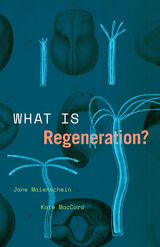
In punishment for his stealing fire, the Greek gods chained Prometheus to a rock, where every day an eagle plucked out his liver, and every night the liver regenerated. While Prometheus may be a figure of myth, scholars today ask whether ancient Greeks knew that the human liver does, in fact, have a special capacity to regenerate. Some organs and tissues can regenerate, while others cannot, and some organisms can regenerate more fully and more easily than others. Cut an earthworm in half, and two wiggly worms may confront you. Cut off the head of a hydra, and it may grow a new head. Cut off a human arm, and the human will be missing an arm. Why the differences? What are the limits of regeneration, and how, when, and why does it occur?
In this book, historians and philosophers of science Jane Maienschein and Kate MacCord explore biological regeneration, delving into a topic of increasing interest in light of regenerative medicine, new tools in developmental and neurobiology, and the urgent need to understand and repair damage to ecosystems brought on by climate change. Looking across scales, from germ, nerve, and stem cells to individual organisms and complex systems, this short and accessible introduction poses a range of deep and provocative questions: What conditions allow some damaged microbiomes to regenerate where others do not? Why are forests following a fire said to regenerate sometimes but not always? And in the face of climate change in the era called the Anthropocene, can the planet regenerate to become healthy again, or will the global ecosystem collapse?
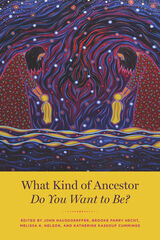
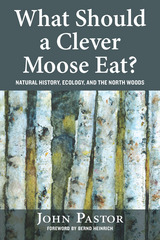
In What Should a Clever Moose Eat?, John Pastor explores the natural history of the North Woods, an immense and complex forest that stretches from the western shore of Lake Superior to the far coast of Newfoundland. The North Woods is one of the most ecologically and geologically interesting places on the planet, with a host of natural history questions arising from each spruce or sugar maple. From the geological history of the region to the shapes of leaves and the relationship between aspens, caterpillars, and predators, Pastor delves into a captivating range of topics as diverse as the North Woods themselves. Through his meticulous observations of the natural world, scientists and nonscientists alike learn to ask natural history questions and form their own theories, gaining a greater understanding of and love for the North Woods—and other natural places precious to them.
In the tradition of Charles Darwin and Henry David Thoreau, John Pastor is a joyful observer of nature who makes sharp connections and moves deftly from observation to theory. Take a walk in John Pastor's North Woods—you'll come away with a new appreciation for details, for the game trails, beaver ponds, and patterns of growth around you, and won't look at the natural world in the same way again.

John T. Lang begins by grounding the debates in the biology and chemistry behind genetic modification. He then shows how food is deeply imbued with religious, social, cultural, and ethical meanings, which bring a variety of non-scientific issues to the forefront and make genetically modified food a proxy for larger debates regarding topics such as globalization and corporate greed. Centrally, he contends that the controversies surrounding the technology reflect ongoing tensions between social and political power, democratic practice, and corporate responsibility. As Lang illustrates, while modern, mechanized, and genetically enhanced production has given the consumer an unprecedented variety and quantity of food, it has also introduced new social and environmental vulnerabilities and uncertainties into the global food system.
Bringing together science, politics, economics, and culture, this book offers a deeply informed look at an important aspect of modern agriculture. It will prove invaluable to anyone who shops at the grocery store, whether they like the benefits that genetic modification has to offer or fear that nature is something we should have left alone.
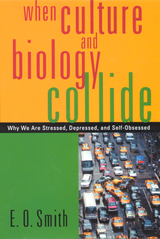
Why do we do things that we know are bad for us? Why do we line up to buy greasy fast food that is terrible for our bodies? Why do we take the potentially lethal risk of cosmetic surgery to have a smaller nose, bigger lips, or a less wrinkled face? Why do we risk life and limb in a fit of road rage to seek revenge against someone who merely cut us off in traffic? If these life choices are simply responses to cultural norms and pressures, then why did these particularly self-destructive patterns evolve in place of more sensible ones?
In When Culture and Biology Collide, E. O. Smith explores various aspects of behavior that are endemic to contemporary Western society, and proposes new ways of understanding and addressing these problems. Our physiology and behavior are the products of thousands of generations of evolutionary history. Every day we play out behaviors that have been part of the human experience for a very long time, yet these behaviors are played out in an arena that is far different from that in which they evolved. Smith argues that this discordance between behavior and environment sets up conditions in which there can be real conflict between our evolved psychological predispositions and the dictates of culture.
Topics such as drug abuse, depression, beauty and self-image, obesity and dieting, stress and violence, ethnic diversity, and welfare are all used as sample case studies. As with all of his case studies, Smith emphasizes the importance of not using an evolutionary explanation as an excuse for a particular pattern of behavior. Instead, he seeks to offer a perspective that will help us see ourselves more clearly and that may be useful in developing intelligent solutions to seemingly intractable problems. Smith provides ways of developing strategies for minimizing our self-destructive tendencies.


A guide to cultivating a shared life of joy and respect with our dogs.
Who’s a Good Dog? is an invitation to nurture more thoughtful and balanced relationships with our canine companions. By deepening our curiosity about what our dogs are experiencing, and by working together with them in a spirit of collaboration, we can become more effective and compassionate caregivers.
With sympathy for the challenges met by both dogs and their humans, bioethicist Jessica Pierce explores common practices of caring for dogs, including how we provide exercise, what we feed, how and why we socialize and train, and how we employ tools such as collars and leashes. She helps us both to identify potential sources of fear and anxiety in our dogs’ lives and to expand practices that provide physical and emotional nourishment. Who’s a Good Dog? also encourages us to think more critically about what we expect of our dogs and how these expectations can set everyone up for success or failure. Pierce offers resources to help us cultivate attentiveness and kindness, inspiring us to practice the art of noticing, of astonishment, of looking with fresh eyes at these beings we think we know so well. And more than this, she makes her findings relatable by examining facets of her relationship with Bella, the dog in her life. As Bella shows throughout, all dogs are good dogs, and we, as humans and dog guardians, could be doing a little bit better to get along with them and give them what they need.
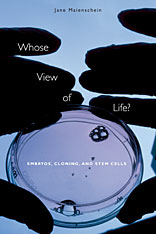
Saving lives versus taking lives: These are the stark terms in which the public regards human embryo research--a battleground of extremes, a war between science and ethics. Such a simplistic dichotomy, encouraged by vociferous opponents of abortion and proponents of medical research, is precisely what Jane Maienschein seeks to counter with this book. Whose View of Life? brings the current debates into sharper focus by examining developments in stem cell research, cloning, and embryology in historical and philosophical context and by exploring legal, social, and ethical issues at the heart of what has become a political controversy.
Drawing on her experience as a researcher, teacher, and congressional fellow, Jane Maienschein provides historical and contemporary analysis to aid understanding of the scientific and social forces that got us where we are today. For example, she explains the long-established traditions behind conflicting views of how life begins--at conception or gradually, in the course of development. She prepares us to engage a major question of our day: How are we, as a 21st-century democratic society, to navigate a course that is at the same time respectful of the range of competing views of life, built on the strongest possible basis of scientific knowledge, and still able to respond to the momentous opportunities and challenges presented to us by modern biology? Maienschein's multidisciplinary perspective will provide a starting point for further attempts to answer this question.
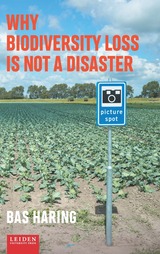
Each year, climate change drives more and more species extinct, leaving many fearful for the fate of the planet. Why Biodiversity Loss is Not a Disaster calms such fears: we have no reason to believe fewer species will result in cataclysmic disaster. In this book, philosopher Bas Haring argues that nature is not like a machine that falls apart without all its parts. While some environments depend on the survival of specific species, he contends, these unique relationships cannot be generalized to the planet at large. In the long view, Haring writes, biodiversity loss is a pity but not a disaster.
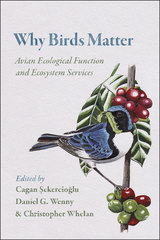
The first book to approach ecosystem services from an ornithological perspective, Why Birds Matter asks what economic value we can ascribe to those services, if any, and how this value should inform conservation. Chapters explore the role of birds in such important ecological dynamics as scavenging, nutrient cycling, food chains, and plant-animal interactions—all seen through the lens of human well-being—to show that quantifying avian ecosystem services is crucial when formulating contemporary conservation strategies. Both elucidating challenges and providing examples of specific ecosystem valuations and guidance for calculation, the contributors propose that in order to advance avian conservation, we need to appeal not only to hearts and minds, but also to wallets.
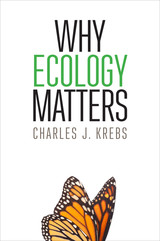
Highlighting key principles in ecology—from species extinction to the sun’s role in powering ecosystems—each chapter introduces a general question, illustrates that question with real-world examples, and links it to pressing ecological issues in which humans play a central role, such as the spread of invasive species, climate change, overfishing, and biodiversity conservation. While other introductions to ecology are rooted in complex theory, math, or practice and relegate discussions of human environmental impacts and their societal implications to sidebars and appendices, Why Ecology Matters interweaves these important discussions throughout. It is a book rooted in our contemporary world, delving into ecological issues that are perennial, timeless, but could not be more timely.
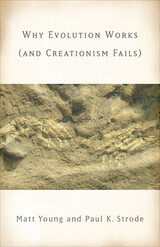
Focusing on what other books omit, how science works and how pseudoscience works, Matt Young and Paul K. Strode demonstrate the futility of “scientific” creationism. They debunk the notion of intelligent design and other arguments that show evolution could not have produced life in its present form.
Concluding with a frank discussion of science and religion, Why Evolution Works (and Creationism Fails) argues that science by no means excludes religion, though it ought tocast doubt on certain religious claims that are contrary to known scientific fact.
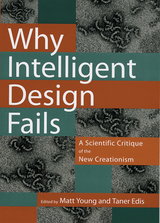
Is Darwinian evolution established fact, or a dogma ready to be overtaken by "intelligent design"? This is the debate raging in courtrooms and classrooms across the country.
Why Intelligent Design Fails assembles a team of physicists, biologists, computer scientists, mathematicians, and archaeologists to examine intelligent design from a scientific perspective. They consistently find grandiose claims without merit.
Contributors take intelligent design's two most famous claims--irreducible complexity and information-based arguments--and show that neither challenges Darwinian evolution. They also discuss thermodynamics and self-organization; the ways human design is actually identified in fields such as forensic archaeology; how research in machine intelligence indicates that intelligence itself is the product of chance and necessity; and cosmological fine-tuning arguments.
Intelligent design turns out to be a scientific mistake, but a mistake whose details highlight the amazing power of Darwinian thinking and the wonders of a complex world without design.
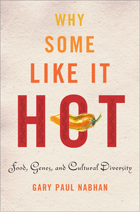
Do your ears burn whenever you eat hot chile peppers? Does your face immediately flush when you drink alcohol? Does your stomach groan if you are exposed to raw milk or green fava beans? If so, you are probably among the one-third of the world's human population that is sensitive to certain foods due to your genes' interactions with them.
Formerly misunderstood as "genetic disorders," many of these sensitivities are now considered to be adaptations that our ancestors evolved in response to the dietary choices and diseases they faced over millennia in particular landscapes. They are liabilities only when we are "out of place," on globalized diets depleted of certain chemicals that triggered adaptive responses in our ancestors.
In Why Some Like It Hot, an award-winning natural historian takes us on a culinary odyssey to solve the puzzles posed by "the ghosts of evolution" hidden within every culture and its traditional cuisine. As we travel with Nabhan from Java and Bali to Crete and Sardinia, to Hawaii and Mexico, we learn how various ethnic cuisines formerly protected their traditional consumers from both infectious and nutrition-related diseases. We also bear witness to the tragic consequences of the loss of traditional foods, from adult-onset diabetes running rampant among 100 million indigenous peoples to the historic rise in heart disease among individuals of northern European descent.
In this, the most insightful and far-reaching book of his career, Nabhan offers us a view of genes, diets, ethnicity, and place that will forever change the way we understand human health and cultural diversity. This book marks the dawning of evolutionary gastronomy in a way that may save and enrich millions of lives.
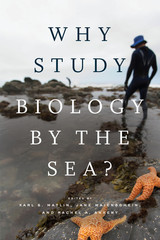
From the Stazione Zoologica in Naples to the Marine Biological Laboratory in Woods Hole, the Amoy Station in China, or the Misaki Station in Japan, students and researchers at seaside research stations have long visited the ocean to investigate life at all stages of development and to convene discussions of biological discoveries. Exploring the history and current reasons for study by the sea, this book examines key people, institutions, research projects, organisms selected for study, and competing theories and interpretations of discoveries, and it considers different ways of understanding research, such as through research repertoires. A celebration of coastal marine research, Why Study Biology by the Sea? reveals why scientists have moved from the beach to the lab bench and back.

Steven Vogel combines his engineering expertise with his remarkable curiosity about how things work to explore how wheels and other mechanisms were, until very recently, powered by the push and pull of the muscles and skeletal systems of humans and other animals. Why the Wheel Is Round explores all manner of treadwheels, hand-spikes, gears, and more, as well as how these technologies diversified into such things as hand-held drills and hurdy-gurdies. Surprisingly, a number of these devices can be built out of everyday components and materials, and Vogel’s accessible and expansive book includes instructions and models so that inspired readers can even attempt to make their own muscle-powered technologies, like trebuchets and ballista.
Appealing to anyone fascinated by the history of mechanics and technology as well as to hobbyists with home workshops, Why the Wheel Is Round offers a captivating exploration of our common technological heritage based on the simple concept of rotation. From our leg muscles powering the gears of a bicycle to our hands manipulating a mouse on a roller ball, it will be impossible to overlook the amazing feats of innovation behind our daily devices.
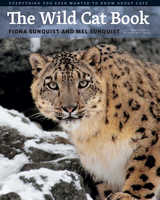
Illustrated throughout with Terry Whittaker’s spectacular color photographs as well as unique photos from biologists in the field—some the highest quality images ever captured of exceptionally rare species—The Wild Cat Book not only tantalizes with the beauty of cats, but also serves as a valuable and accessible reference on cat behavior and conservation. Comprehensive entries for each of the thirty-seven cat species include color distribution maps and up-to-date information related to the species’ IUCN conservation and management statuses, while informative sidebars reveal why male lions have manes (and why dark manes are sexiest), how cats see with their whiskers, the truth behind our obsession with white lions and tigers, and why cats can’t be vegetarians. The Wild Cat Book also highlights the grave threats faced by the world’s wild cats—from habitat destruction to human persecution.
From the extraordinary acrobatics of the arboreal margay—able to cling to a tree branch by a single paw thanks to its unusually flexible ankles—to modern declines in African lion populations, The Wild Cat Book is an instructive and revealing ode to felines of every size and color. Combining science, behavioral observations, and stunning photography, this book will captivate cat fanciers the world over.
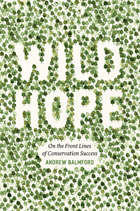

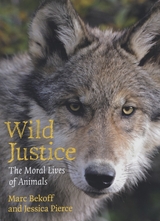
Scientists have long counseled against interpreting animal behavior in terms of human emotions, warning that such anthropomorphizing limits our ability to understand animals as they really are. Yet what are we to make of a female gorilla in a German zoo who spent days mourning the death of her baby? Or a wild female elephant who cared for a younger one after she was injured by a rambunctious teenage male? Or a rat who refused to push a lever for food when he saw that doing so caused another rat to be shocked? Aren’t these clear signs that animals have recognizable emotions and moral intelligence? With Wild Justice Marc Bekoff and Jessica Pierce unequivocally answer yes.
Marrying years of behavioral and cognitive research with compelling and moving anecdotes, Bekoff and Pierce reveal that animals exhibit a broad repertoire of moral behaviors, including fairness, empathy, trust, and reciprocity. Underlying these behaviors is a complex and nuanced range of emotions, backed by a high degree of intelligence and surprising behavioral flexibility. Animals, in short, are incredibly adept social beings, relying on rules of conduct to navigate intricate social networks that are essential to their survival. Ultimately, Bekoff and Pierce draw the astonishing conclusion that there is no moral gap between humans and other species: morality is an evolved trait that we unquestionably share with other social mammals.
Sure to be controversial, Wild Justice offers not just cutting-edge science, but a provocative call to rethink our relationship with—and our responsibilities toward—our fellow animals.
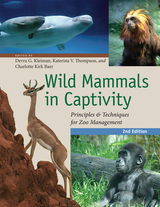
Zoos, aquaria, and wildlife parks are vital centers of animal conservation and management. For nearly fifteen years, these institutions have relied on Wild Mammals in Captivity as the essential reference for their work. Now the book reemerges in a completely updated second edition. Wild Mammals in Captivity presents the most current thinking and practice in the care and management of wild mammals in zoos and other institutions. In one comprehensive volume, the editors have gathered the most current information from studies of animal behavior; advances in captive breeding; research in physiology, genetics, and nutrition; and new thinking in animal management and welfare.
In this edition, more than three-quarters of the text is new, and information from more than seventy-five contributors is thoroughly updated. The standard text for all courses in zoo biology, Wild Mammals in Captivity will, in its new incarnation, continue to be used by zoo managers, animal caretakers, researchers, and anyone with an interest in how to manage animals in captive conditions.
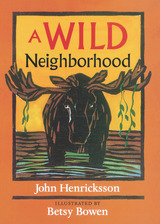
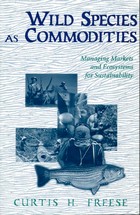
In recent years, some policymakers and conservationists have argued that natural resources will be protected only if economic benefits accrue to those who are responsible for caring for the resources. Such commercial consumptive use of wild species (CCU) provides an economically viable alternative to more ecologically destructive land uses, and could help accomplish the overall goals of biodiversity conservation.
Yet many questions remain: Will the harvest of wild species be sustainable? Will habitats be protected? What tradeoffs are implied for the populations and ecosystems under management? While this debate goes on, researchers and managers are confronting an array of real-world problems in managing harvested populations of wild species. Wild Species as Commodities presents a balanced, scientifically rigorous consideration of the link between CCU and biodiversity conservation. The outgrowth of a four-year World Wildlife Fund study, the book is both a synthesis of findings and a practical guide. Topics examined include:
forestry, fisheries, sport hunting, and nontimber forest products the economics of wild species use social and institutional frameworks required for sustainability ecological impacts biodiversity consequences of ecosystem specialization conservation benefits of wild species use management principles and guideline.
Wild Species as Commodities provides a primer on the CCU-biodiversity link, and an interdisciplinary analysis of the major economic, social, and ecological factors involved, along with guidelines for incorporating biodiversity conservation into commercial harvesting programs. It is a highly accessible source of information, concepts, and management approaches for professionals in resource management and wildlife conservation, and academics in conservation biology, environmental and ecological economics, and environmental studies.
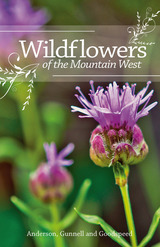
Many recreational hikers have stopped along the trail to admire a wildflower only to wonder what, exactly, they are looking at. Wildflowers of the Mountain West is a useful field guide that makes flower identification easy for the general outdoor enthusiast.
Many available plant guides are too technical or cumbersome for non-specialists to embrace. Covering New Mexico, Colorado, Wyoming, Idaho, Utah, Nevada and Oregon, this book is perfect for the enthusiasts who has little botanical knowledge but would like to know more about the wildflowers they are seeing. Organized by flower color for easy reference, plant records include the common and scientific names, a description of typical characteristics, habitat information and distribution maps, look-alike species, color photographs, and informative commentary. In addition, the book provides a useful introduction to the Mountain West region, along with line drawings to illustrate basic flower parts, shapes, and arrangements; a glossary of common botanical terms; a quick search key; and an index.
The book is spiral-bound, making it easy to bring along while hiking, backpacking, or biking, and stunning full color photographs make visual confirmation of flower type simple and straightforward.
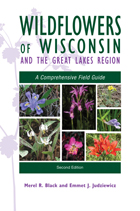
• more than 1,100 species from 459 genera in 100 families
• many rare and previously overlooked species
• 2,100 color photographs and 300 drawings
• Wisconsin distribution maps for almost all plants
• brief descriptions including distinguishing characteristics of the species
• Wisconsin status levels for each species of wildflower (native, invasive, endangered, etc.)
• derivation of Latin names.
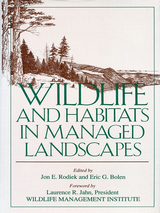
Americans are having an increasing impact on the rural landscape as development further encroaches in former wilderness areas. This disruptive land use is causing a decline in wildlife and wildlife habitats. Wildlife and Habitats in Managed Landscapes presents a new strategy for solving this problem by redefining habitats to include the concept of landscape. Employing this strategy, natural resource managers apply tools of planning, management, and design to entire landscapes to meet the needs of both wildlife and humans.
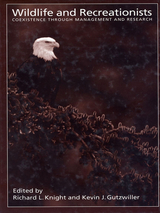
Wildlife and Recreationists defines and clarifies the issues surrounding the conflict between outdoor recreation and the health and well-being of wildlife and ecosystems. Contributors to the volume consider both direct and indirect effects of widlife-recreationist interactions, including:
- wildlife responses to disturbance, and the origins of these responses
- how specific recreational activities affect diverse types of wildlife
- the human dimensions of managing recreationists
- the economic importance of outdoor recreation
- how wildlife and recreationists might be able to coexist
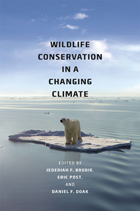
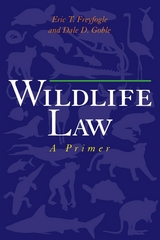
Authors Eric T. Freyfogle and Dale D. Goble are legal scholars who are experts in wildlife law. This book is the first ever to survey the entire field, covering state and federal law with a strong grounding in wildlife science. The writing style is lively and engaging, with descriptions of unusual and intriguing cases that illustrate key points and bring to life the importance and intricacies of the field.
The book includes thirteen chapters on topics such as
• what wildlife law is, what it covers, and what it seeks to achieve;
• constitutional issues and key federal statutes;
• wildlife liability issues, from spider bites to escaped zoo animals;
• state game laws, hunting and fishing rights of Indian tribes;
• and the Endangered Species Act.
Wildlife Law fills a long-standing gap in the literature and introduces readers to the basics of wildlife law while exploring such current controversies as endangered species protection, tribal fishing rights, game ranches, and the challenges of constructing wildlife corridors. It is a much-needed addition to the bookshelf of everyone working with or concerned about wildlife in the United States.
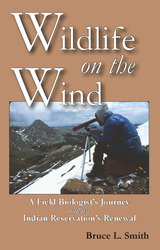
In the heart of Wyoming sprawls the ancient homeland of the Eastern Shoshone Indians, who were forced by the U.S. government to share a reservation in the Wind River basin and flanking mountain ranges with their historical enemy, the Northern Arapahos. Both tribes lost their sovereign, wide-ranging ways of life and economic dependence on decimated buffalo. Tribal members subsisted on increasingly depleted numbers of other big game—deer, elk, moose, pronghorn, and bighorn sheep. In 1978, the tribal councils petitioned the U.S. Fish and Wildlife Service to help them recover their wildlife heritage. Bruce Smith became the first wildlife biologist to work on the reservation. Wildlife on the Wind recounts how he helped Native Americans change the course of conservation for some of America's most charismatic wildlife.
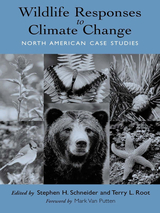
Wildlife Responses to Climate Change is the culmination of a three-year project to research and study the impacts of global climate change on ecosystems and individual wildlife species in North America. In 1997, the National Wildlife Federation provided fellowships to eight outstanding graduate students to conduct research on global climate change, and engaged leading climate change experts Stephen H. Schneider and Terry L. Root to advise and guide the project. This book presents the results, with chapters describing groundbreaking original research by some of the brightest young scientists in America. The book presents case studies that examine:
- ways in which local and regional climate variables affect butterfly populations and habitat ranges
- how variations in ocean temperatures have affected intertidal marine species
- the potential effect of reduced snow cover on plants in the Rocky Mountains
- the potential effects of climate change on the distribution of vegetation in the United States
- how climate change may increase the susceptibility of ecosystems to invasions of non-native species
- the potential for environmental change to alter interactions between a variety of organisms in whitebark pine communities of the Greater Yellowstone Ecosystem
Each of the eight case studies provides important information about how biotic systems respond to climatic variables, and how a changing climate may affect biotic systems in the future. They also acknowledge the inherent complexities of problems likely to arise from changes in climate, and demonstrate the types of scientific questions that need to be explored in order to improve our understanding of how climate change and other human disturbances affect wildlife and ecosystems.
Wildlife Responses to Climate Change is an important addition to the body of knowledge critical to scientists, resource managers, and policymakers in understanding and shaping solutions to problems caused by climate change. It provides a useful resource for students and scientists studying the effects of climate change on wildlife and will assist resource managers and other wildlife professionals to better understand factors affecting the species they are striving to conserve.
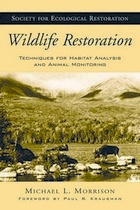
Wildlife Restoration links restoration ecology and wildlife management in an accessible and comprehensive guide to restoring wildlife and the habitats upon which they depend. It offers readers a thorough overview of the types of information needed in planning a wildlife-habitat restoration project and provides the basic tools necessary for developing and implementing a rigorous monitoring program. The book:
- explains the concepts of habitat and niche: their historic development, components, spatial-temporal relationships, and role in land management
- reviews how wildlife populations are identified and counted
- considers captive breeding, reintroduction, and translocation of animals
- discusses how wildlife and their habitat needs can be incorporated into restoration planning
- develops a solid justification for monitoring and good sampling design in restoration projects
- discusses and critiques case histories of wildlife analysis in restoration projects
The author does not offer a "cookbook" approach, but rather provides basic tools for understanding ecological concepts that can be used to design restoration projects with specific goals for wildlife. He focuses on developing an integrated approach to large-scale landscape restoration. In addition, he provides guidance on where more advanced and detailed literature can be found.
Wildlife Restoration sets forth a clear explanation of key principles of wildlife biology for the restorationist, and will allow wildlife biologists to bring the insights of their field to restoration projects. It is an essential source of information for everyone involved with studying, implementing, or managing wildlife restoration projects, including students, ecologists, administrators, government agency staff, and volunteer practitioners.
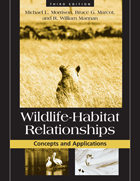
Now in its third edition, Wildlife-Habitat Relationships combines basic field zoology and natural history, evolutionary biology, ecological theory, and quantitative tools in explaining ecological processes and their influence on wildlife and habitats. Also included is a glossary of terms that every wildlife professional should know.
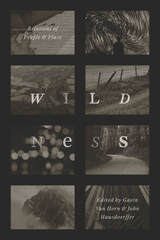
This book charts a different path. Exploring how people can become attuned to the wild community of life and also contribute to the well-being of the wild places in which we live, work, and play, Wildness brings together esteemed authors from a variety of landscapes, cultures, and backgrounds to share their stories about the interdependence of everyday human lifeways and wildness. As they show, far from being an all or nothing proposition, wildness exists in variations and degrees that range from cultivated soils to multigenerational forests to sunflowers pushing through cracks in a city alley. Spanning diverse geographies, these essays celebrate the continuum of wildness, revealing the many ways in which human communities can nurture, adapt to, and thrive alongside their wild nonhuman kin.
From the contoured lands of Wisconsin’s Driftless region to remote Alaska, from the amazing adaptations of animals and plants living in the concrete jungle to indigenous lands and harvest ceremonies, from backyards to reclaimed urban industrial sites, from microcosms to bioregions and atmospheres, manifestations of wildness are everywhere. With this book, we gain insight into what wildness is and could be, as well as how it might be recovered in our lives—and with it, how we might unearth a more profound, wilder understanding of what it means to be human.
Wildness: Relations of People and Place is published in association with the Center for Humans and Nature, an organization that brings together some of the brightest minds to explore and promote human responsibilities to each other and the whole community of life. Visit the Center for Humans and Nature's Wildness website for upcoming events and a series of related short films.

Psychoanalyst, political theorist, pioneer of body therapies, prophet of the sexual revolution—all fitting titles, but Wilhelm Reich has never been recognized as a serious laboratory scientist, despite his experimentation with bioelectricity and unicellular organisms. Wilhelm Reich, Biologist is an eye-opening reappraisal of one of twentieth-century science’s most controversial figures—perhaps the only writer whose scientific works were burned by both the Nazis and the U.S. government. Refuting allegations of “pseudoscience” that have long dogged Reich’s research, James Strick argues that Reich’s lab experiments in the mid-1930s represented the cutting edge of light microscopy and time-lapse micro-cinematography and deserve to be taken seriously as legitimate scientific contributions.
Trained in medicine and a student of Sigmund Freud, Reich took to the laboratory to determine if Freud’s concept of libido was quantitatively measurable. His electrophysiological experiments led to his “discovery” of microscopic vesicles (he called them “bions”), which Reich hypothesized were instrumental in originating life from nonliving matter. Studying Reich’s laboratory notes from recently opened archives, Strick presents a detailed account of the bion experiments, tracing how Reich eventually concluded he had discovered an unknown type of biological radiation he called “orgone.” The bion experiments were foundational to Reich’s theory of cancer and later investigations of orgone energy.
Reich’s experimental findings and interpretations were considered discredited, but not because of shoddy lab technique, as has often been claimed. Scientific opposition to Reich’s experiments, Strick contends, grew out of resistance to his unorthodox sexual theories and his Marxist political leanings.

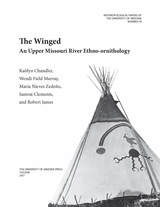
The Missouri River Basin is home to thousands of bird species that migrate across the Great Plains of North America each year, marking the seasonal cycle and filling the air with their song. In time immemorial, Native inhabitants of this vast region established alliances with birds that helped them to connect with the gods, to learn the workings of nature, and to live well.
This book integrates published and archival sources covering archaeology, ethnohistory, historical ethnography, folklore, and interviews with elders from the Blackfoot, Assiniboine, Mandan, Hidatsa, Arikara, and Crow communities to explore how relationships between people and birds are situated in contemporary practice, and what has fostered its cultural persistence. Native principles of ecological and cosmological knowledge are brought into focus to highlight specific beliefs, practices, and concerns associated with individual bird species, bird parts, bird objects, the natural and cultural landscapes that birds and people cohabit, and the future of this ancient alliance.
Detailed descriptions critical to ethnohistorians and ethnobiologists are accompanied by thirty-four color images. A unique contribution, The Winged expands our understanding of sets of interrelated dependencies or entanglements between bird and human agents, and it steps beyond traditional scientific and anthropological distinctions between humans and animals to reveal the intricate and eminently social character of these interactions.
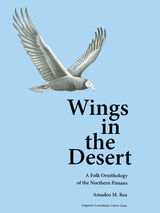
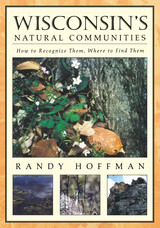
Cattails grow in a marsh, pitcher plants grow in a bog, jewelweed grows in a swamp, right? Do sandhill cranes live among sandy hills? Frogs live near lakes and ponds, but can they live on prairies, too? What is a pine barrens, an oak opening, a calcareous fen?
Wisconsin’s Natural Communities is an invitation to discover, explore, and understand Wisconsin’s richly varied natural environment, from your backyard or neighborhood park to stunning public preserves.Part 1 of the book explains thirty-three distinct types of natural communities in Wisconsin—their characteristic trees, beetles, fish, lichens, butterflies, reptiles, mammals, wildflowers—and the effects of geology, climate, and historical events on these habitats. Part 2 describes and maps fifty natural areas on public lands that are outstanding examples of these many different natural communities: Crex Meadows, Horicon Marsh, Black River Forest, Maribel Caves, Whitefish Dunes, the Blue Hills, Avoca Prairie, the Moquah Barrens and Chequamegon Bay, the Ridges Sanctuary, Cadiz Springs, Devil’s Lake, and many others.
Intended for anyone who has a love for the natural world, this book is also an excellent introduction for students. And, it provides landowners, public officials, and other stewards of our environment with the knowledge to recognize natural communities and manage them for future generations.
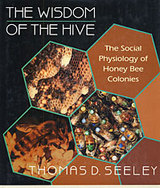
This book is about the inner workings of one of nature’s most complex animal societies: the honey bee colony. It describes and illustrates the results of more than fifteen years of elegant experimental studies conducted by the author. In his investigations, Thomas Seeley has sought the answer to the question of how a colony of bees is organized to gather its resources. The results of his research—including studies of the shaking signal, tremble dance, and waggle dance, and other, more subtle means by which information is exchanged among bees—offer the clearest, most detailed picture available of how a highly integrated animal society works. By showing how several thousand bees function together as an integrated whole to collect the nectar, pollen, and water that sustain the life of the hive, Seeley sheds light on one of the central puzzles of biology: how units at one level of organization can work together to form a higher-level entity.
In explaining why a hive is organized the way it is, Seeley draws on the literature of molecular biology, cell biology, animal and human sociology, economics, and operations research. He compares the honey bee colony to other functionally organized groups: multicellular organisms, colonies of marine invertebrates, and human societies. All highly cooperative groups share basic problems: of allocating their members among tasks so that more urgent needs are met before less urgent ones, and of coordinating individual actions into a coherent whole. By comparing such systems in different species, Seeley argues, we can deepen our understanding of the mechanisms that make close cooperation a reality.
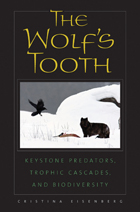
In The Wolf's Tooth, scientist and author Cristina Eisenberg explores the concept of "trophic cascades" and the role of top predators in regulating ecosystems. Her fascinating and wide-ranging work provides clear explanations of the science surrounding keystone predators and considers how this notion can help provide practical solutions for restoring ecosystem health and functioning.
Eisenberg examines both general concepts and specific issues, sharing accounts from her own fieldwork to illustrate and bring to life the ideas she presents. She considers how resource managers can use knowledge about trophic cascades to guide recovery efforts, including how this science can be applied to move forward the bold vision of rewilding the North American continent. In the end, the author provides her own recommendations for local and landscape-scale applications of what has been learned about interactive food webs.
At their most fundamental level, trophic cascades are powerful stories about ecosystem processes—of predators and their prey, of what it takes to survive in a landscape, of the flow of nutrients. The Wolf's Tooth is the first book to focus on the vital connection between trophic cascades and restoring biodiversity and habitats, and to do so in a way that is accessible to a diverse readership.

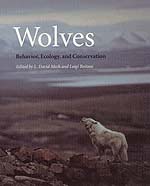
As wolf populations have rebounded, scientific studies of them have also flourished. But there hasn't been a systematic, comprehensive overview of wolf biology since 1970. In Wolves, many of the world's leading wolf experts provide state-of-the-art coverage of just about everything you could want to know about these fascinating creatures. Individual chapters cover wolf social ecology, behavior, communication, feeding habits and hunting techniques, population dynamics, physiology and pathology, molecular genetics, evolution and taxonomy, interactions with nonhuman animals such as bears and coyotes, reintroduction, interactions with humans, and conservation and recovery efforts. The book discusses both gray and red wolves in detail and includes information about wolves around the world, from the United States and Canada to Italy, Romania, Saudi Arabia, Israel, India, and Mongolia. Wolves is also extensively illustrated with black and white photos, line drawings, maps, and fifty color plates.
Unrivalled in scope and comprehensiveness, Wolves will become the definitive resource on these extraordinary animals for scientists and amateurs alike.
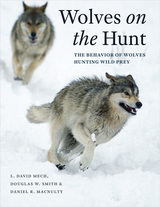
Combining behavioral data, thousands of hours of original field observations, research in the literature, a wealth of illustrations, and—in the e-book edition and online—video segments from cinematographer Robert K. Landis, the authors create a compelling and complex picture of these hunters. The wolf is indeed an adept killer, able to take down prey much larger than itself. While adapted to hunt primarily hoofed animals, a wolf—or especially a pack of wolves—can kill individuals of just about any species. But even as wolves help drive the underlying rhythms of the ecosystems they inhabit, their evolutionary prowess comes at a cost: wolves spend one-third of their time hunting—the most time consuming of all wolf activities—and success at the hunt only comes through traveling long distances, persisting in the face of regular failure, detecting and taking advantage of deficiencies in the physical condition of individual prey, and through ceaseless trial and error, all while risking injury or death.
By describing and analyzing the behaviors wolves use to hunt and kill various wild prey—including deer, moose, caribou, elk, Dall sheep, mountain goats, bison, musk oxen, arctic hares, beavers, and others—Wolves on the Hunt provides a revelatory portrait of one of nature’s greatest hunters.

What does it mean to be female? Sarah Blaffer Hrdy--a sociobiologist and a feminist--believes that evolutionary biology can provide some surprising answers. Surprising to those feminists who mistakenly think that biology can only work against women. And surprising to those biologists who incorrectly believe that natural selection operates only on males.
In The Woman That Never Evolved we are introduced to our nearest female relatives competitive, independent, sexually assertive primates who have every bit as much at stake in the evolutionary game as their male counterparts do. These females compete among themselves for rank and resources, but will bond together for mutual defense. They risk their lives to protect their young, yet consort with the very male who murdered their offspring when successful reproduction depends upon it. They tolerate other breeding females if food is plentiful, but chase them away when monogamy is the optimal strategy. When "promiscuity" is an advantage, female primates--like their human cousins--exhibit a sexual appetite that ensures a range of breeding partners. From case after case we are led to the conclusion that the sexually passive, noncompetitive, all-nurturing woman of prevailing myth never could have evolved within the primate order.
Yet males are almost universally dominant over females in primate species, and Homo sapiens is no exception. As we see from this book, women are in some ways the most oppressed of all female primates. Sarah Blaffer Hrdy is convinced that to redress sexual inequality in human societies, we must first understand its evolutionary origins. We cannot travel back in time to meet our own remote ancestors, but we can study those surrogates we have--the other living primates. If women --and not biology--are to control their own destiny, they must understand the past and, as this book shows us, the biological legacy they have inherited.
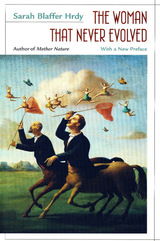
What does it mean to be female? Sarah Blaffer Hrdy--a sociobiologist and a feminist--believes that evolutionary biology can provide some surprising answers. Surprising to those feminists who mistakenly think that biology can only work against women. And surprising to those biologists who incorrectly believe that natural selection operates only on males.
In The Woman That Never Evolved we are introduced to our nearest female relatives competitive, independent, sexually assertive primates who have every bit as much at stake in the evolutionary game as their male counterparts do. These females compete among themselves for rank and resources, but will bond together for mutual defense. They risk their lives to protect their young, yet consort with the very male who murdered their offspring when successful reproduction depends upon it. They tolerate other breeding females if food is plentiful, but chase them away when monogamy is the optimal strategy. When "promiscuity" is an advantage, female primates--like their human cousins--exhibit a sexual appetite that ensures a range of breeding partners. From case after case we are led to the conclusion that the sexually passive, noncompetitive, all-nurturing woman of prevailing myth never could have evolved within the primate order.
Yet males are almost universally dominant over females in primate species, and Homo sapiens is no exception. As we see from this book, women are in some ways the most oppressed of all female primates. Sarah Blaffer Hrdy is convinced that to redress sexual inequality in human societies, we must first understand its evolutionary origins. We cannot travel back in time to meet our own remote ancestors, but we can study those surrogates we have--the other living primates. If women --and not biology--are to control their own destiny, they must understand the past and, as this book shows us, the biological legacy they have inherited.
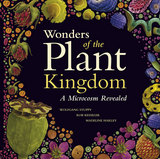
With Wonders of the Plant Kingdom, the naked eye gets an unforgettable boost. A stunning collaboration between science and art, this gorgeous book presents hundreds of images of plants taken with a scanning electron microscope and hand-colored by artist Rob Kesseler to reveal the awe-inspiring adaptations all around us. The surface of a peach—with its hairs, or trichomes, and sunken stomata, or breathing pores—emerges from these pages in microscopic detail. The dust-like seeds of the smallest cactus species in the world, the Blossfeldia liliputana—which measures just twelve millimeters fully grown—explode here with form, color, and character, while the flower bud of a kaffir lime, cross-sectioned, reveals the complex of a flower bud with the all-important pistil in the center.
Accompanying these extraordinary images are up-to-date explanations of the myriad ways that these plants have ensured their own survival—and, by proxy, our own. Gardeners and science buffs alike will marvel at this wholly new perspective on the world of plant diversity.
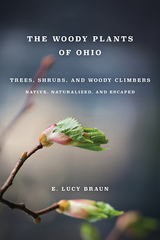
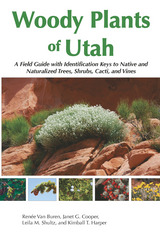
A comprehensive guide that includes a vast range of species and plant communities and employs thorough, original keys. Based primarily on vegetative characteristics, the keys don't require that flowers or other reproductive features be present, like many plant guides. And this guide's attention to woody plants as a whole allows one to identify a much greater variety of plants. That especially suits an arid region such as Utah with less diverse native trees. Woody plants are those that have stems that persist above ground even through seasons that don't favor growth, due to low precipitation or temperatures.
Woody Plants of Utah employs dichotomous identification keys that are comparable to a game of twenty questions. They work through a process of elimination by choosing sequential alternatives.
Detailed, illustrated plant descriptions complement the keys and provide additional botanical and environmental information in relation to a useful introductory categorization of Utah plant communities. Supplementary tools include photos, distribution maps, and an illustrated glossary.
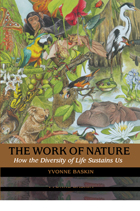
The lavish array of organisms known as "biodiversity" is an intricately linked web that makes the earth a uniquely habitable planet. Yet pressures from human activities are destroying biodiversity at an unprecedented rate. How many species can be lost before the ecological systems that nurture life begin to break down?
In The Work of Nature, noted science writer Yvonne Baskin examines the threats posed to humans by the loss of biodiversity. She summarizes and explains key findings from the ecological sciences, highlighting examples from around the world where shifts in species have affected the provision of clean air, pure water, fertile soils, lush landscapes, and stable natural communities.
As Baskin makes clear, biodiversity is much more than number of species -- it includes the complexity, richness, and abundance of nature at all levels, from the genes carried by local populations to the layout of communities and ecosystems across the landscape. Ecologists are increasingly aware that mankind's wanton destruction of living organisms -- the planet's work force -- threatens to erode our basic life support services. With uncommon grace and eloquence, Baskin demonstrates how and why that is so.
Distilling and bringing to life the work of the world's leading ecologists, The Work of Nature is the first book of its kind to clearly explain the practical consequences of declining biodiversity on ecosystem health and function.

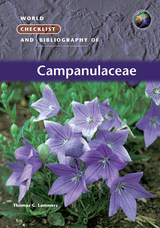
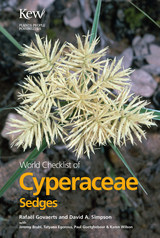
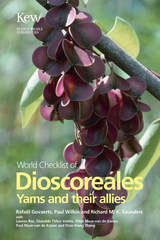
The World Checklist of Dioscoreales lists all validly published names of yams and their allies, providing the source of their publication and indication of which names are currently accepted and which are synonyms, making it a standard nomenclatural reference for further research into this important family.
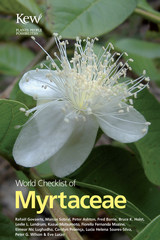
The World Checklist of Myrtaceae is a much needed work that lists all validly published names in the family, providing the source of their publication and indicating which names are currently accepted and which are synonyms. It will be respected as the standard nomenclatural reference for further research into this important family.
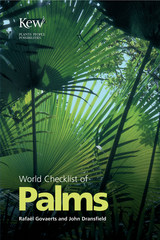
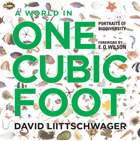
For A World in One Cubic Foot, esteemed nature photographer David Liittschwager took a bright green metal cube—measuring precisely one cubic foot—and set it in various ecosystems around the world, from Costa Rica to Central Park. Working with local scientists, he measured what moved through that small space in a period of twenty-four hours. He then photographed the cube’s setting and the plant, animal, and insect life inside it—anything visible to the naked eye. The result is a stunning portrait of the amazing diversity that can be found in ecosystems around the globe. Many organisms captured in Liittschwager’s photographs have rarely, if ever, been presented in their full splendor to the general reader, and the singular beauty of these images evocatively conveys the richness of life around us and the essential need for its conservation. The breathtaking images are accompanied by equally engaging essays that speak to both the landscapes and the worlds contained within them, from distinguished contributors such as Elizabeth Kolbert and Alan Huffman, in addition to an introduction by E. O. Wilson. After encountering this book, you will never look at the tiniest sliver of your own backyard or neighborhood park the same way; instead, you will be stunned by the unexpected variety of species found in an area so small.
A World in One Cubic Foot puts the world accessibly in our hands and allows us to behold the magic of an ecosystem in miniature. Liittschwager’s awe-inspiring photographs take us to places both familiar and exotic and instill new awareness of the life that abounds all around.

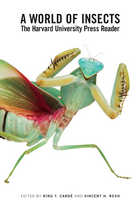
As we follow the path of a giant water bug or peer over the wing of a gypsy moth, we glimpse our world anew, at once shrunk and magnified. Owing to their size alone, insects’ experience of the world is radically different from ours. Air to them is as viscous as water to us. The predicament of size, along with the dizzying diversity of insects and their status as arguably the most successful organisms on earth, have inspired passion and eloquence in some of the world’s most innovative scientists. A World of Insects showcases classic works on insect behavior, physiology, and ecology published over half a century by Harvard University Press.
James Costa, Vincent Dethier, Thomas Eisner, Lee Goff, Bernd Heinrich, Bert Hölldobler, Kenneth Roeder, Andrew Ross, Thomas Seeley, Karl von Frisch, Gilbert Waldbauer, E. O. Wilson, and Mark Winston—each writer, in his unique voice, paints a close-up portrait of the ways insects explore their environment, outmaneuver their enemies, mate, and care for kin.
Selected by two world-class entomologists, these essays offer compelling descriptions of insect cooperation and warfare, the search for ancient insect DNA in amber, and the energy economics of hot-blooded insects. They also discuss the impact—for good and ill—of insects on our food supply, their role in crime scene investigation, and the popular fascination with pheromones, killer bees, and fire ants. Each entry begins with commentary on the authors, their topics, and the latest research in the field.
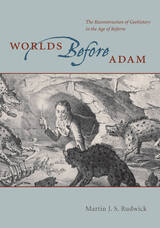
The first detailed account of the reconstruction of prehuman geohistory, Martin J. S. Rudwick’s Worlds Before Adam picks up where his celebrated Bursting the Limits of Time leaves off. Here, Rudwick takes readers from the post-Napoleonic Restoration in Europe to the early years of Britain’s Victorian age, chronicling the staggering discoveries geologists made during the period: the unearthing of the first dinosaur fossils, the glacial theory of the last ice age, and the meaning of igneous rocks, among others. Ultimately, Rudwick reveals geology to be the first of the sciences to investigate the historical dimension of nature, a model that Charles Darwin used in developing his evolutionary theory.
Featuring an international cast of colorful characters, with Georges Cuvier and Charles Lyell playing major roles and Darwin appearing as a young geologist, Worlds Before Adam is a worthy successor to Rudwick’s magisterial first volume. Completing the highly readable narrative of one of the most momentous changes in human understanding of our place in the natural world, Worlds Before Adam is a capstone to the career of one of the world’s leading historians of science.
READERS
Browse our collection.
PUBLISHERS
See BiblioVault's publisher services.
STUDENT SERVICES
Files for college accessibility offices.
UChicago Accessibility Resources
home | accessibility | search | about | contact us
BiblioVault ® 2001 - 2024
The University of Chicago Press









